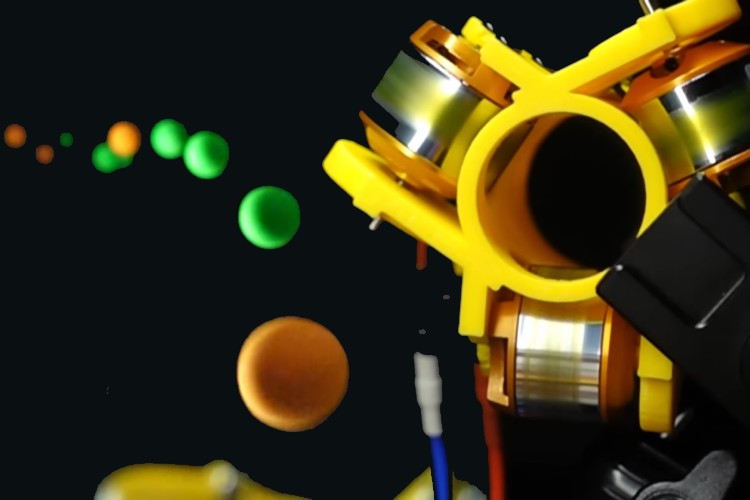
In a recent project released the thisismax Youtube channel explores how the Magnus effect can be used to steer projectiles in the air using a custom-built, 3D-printed ball launcher. Inspired by DARPA’s EXACTO project, which developed guided bullets that could change direction mid-flight, this experiment takes a much simpler approach. Instead of complex electronics, it relies on BLDC drone motors to spin the ball in a way that makes it curve as it moves. This is the same principle seen in sports like cricket or baseball, where bowlers and pitchers use spin to control the ball’s path. By adjusting the speed of three motors spaced 120 degrees apart, the system can control the direction and amount of spin applied to the ball, making it turn while in the air.

The Magnus effect occurs because air moves faster on one side of a spinning ball, creating a pressure difference that pushes it sideways. To achieve precise control over this force, vector mathematics is used. The three motors are arranged in a triangular pattern, and their speeds need to be adjusted based on the desired spin direction. By representing the required spin as a vector, its components are projected onto each motor’s axis. The contribution of each motor is determined by measuring how much of this vector aligns with its rotation direction. Using simple trigonometry, the system calculates how fast each motor should spin to achieve the required curve. A wireless gaming controller was used to control the motors, allowing adjustments in real time.

One of the challenges was making sure the math behind the motor control worked as expected. Initially, an error in motor alignment caused the forces to be applied in the wrong direction, requiring a 180-degree rotation and mirroring of the calculations. Once corrected, the system was able to curve the ball by about 1.5 to 2 feet over a 6-foot distance. Slow-motion footage confirmed that the effect was working, though the friction between the motors and the ball caused some melting of the ball’s surface, leaving behind thin fibres.

